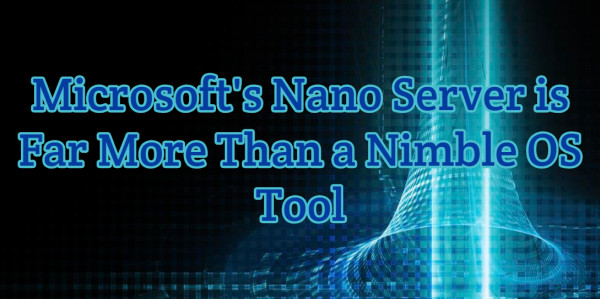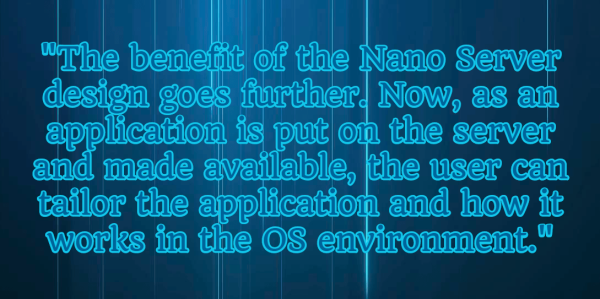Microsoft’s Nano Server Is Far More Than A Nimble OS Tool
The idea of network infrastructure integrity has never been a top priority for programmers. There realm is to take care of the software code that runs through everything. How the highways and bridges are built is someone else’s issue.
Of course, that attitude was from a time when code was written, tested, beta-tested, launched, fixed, made bug-free, and then copied by a competitor when it was popular. There was rarely any element in that mix that worried about making sure a program code would work across multiple platforms. Further, coding implementation was done in great big projects, not nimble patches and updates on the fly. Times have changed.

What’s the Big Deal?
The coming provision of Microsoft Nano Server is a bit of a game changer. Not only does the system provide users an operating system that can be connected and deployed immediately, it has created the catalyst where OS provision and coding converge in a creative format. Whazza huh – You say? Look closely.
Nano seems at first to be very much like a stripped down Windows Server. All the bells and whistles are taken out, or it seems so, but that in itself is the key. Instead of predefined user interfaces, the Nano Server allows the user to create and design those features, using Powershell’s Desired State Configuration to make and kick into gear what is needed when. It literally is a programmable OS.
The benefit of the Nano Server design goes further. Now, as an application is put on the server and made available, the user can tailor the application and how it works in the OS environment. Previously, there was only one way an application worked, period.
A Change in OS Roles
Suddenly, this paradigm moves the operation and direction of how an OS is used from the role of the network administrator to the program developer side of the house. An OS is no longer a bucket; it’s a bona fide canvas to be painted on and customized. Every feature, UI, app and connection can be a developer’s unique setup, providing maximum distinct service to the company that uses the OS.
No surprise, an extremely flexible and scalable OS means that the entire way of thinking about how a system is set up has to change. Role responsibilities shift and the purpose and function of an OS changes as well. We’re often partial to containerization in code development because it makes things far easier to build in modular fashion as well as to operation and run.
However, this new OS style will now force developers to have to think globally about how everything interconnects across a Nano Server, not just how it functions in one module.

Game Changing
Microsoft Nano Server is clearly designed for the smaller organization that needs to be nimble and where flexibility of operations for custom needs is in high demand. However, this approach is very likely going to usher in a new way of doing business across the board when it comes to network OS management.
On the natural, it triggers some seat changing in roles between administrators and devops. And that changes the culture, paradigm, and approach to how an OS is run and applied. The end user will likely be the last to notice, but for those who manage the infrastructure, the Nano Server is a bit of a new dawn.
Katrina is the resident how-to gal for rack solutions visit her video series on youtube called ask Katrina.

















